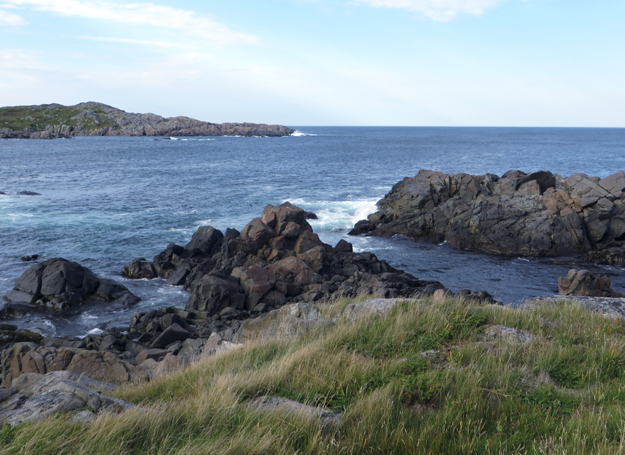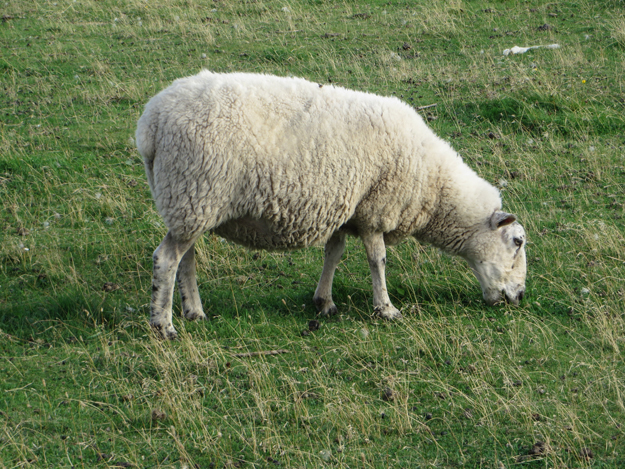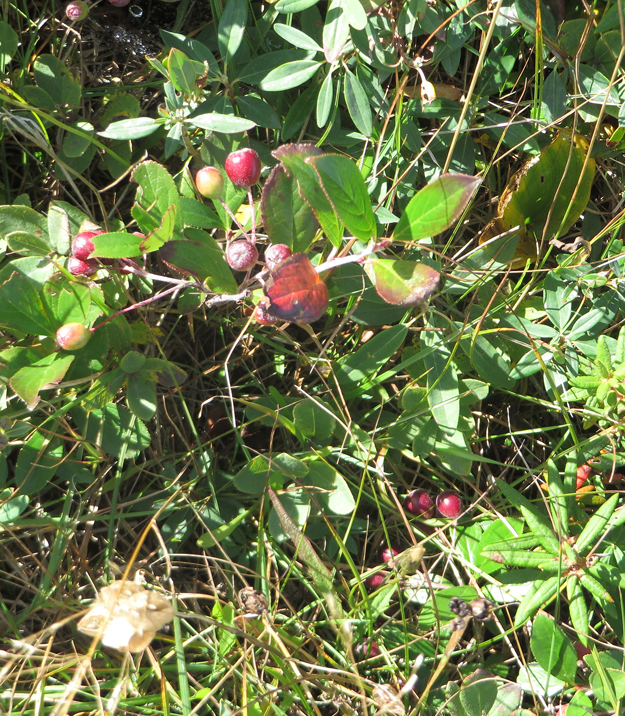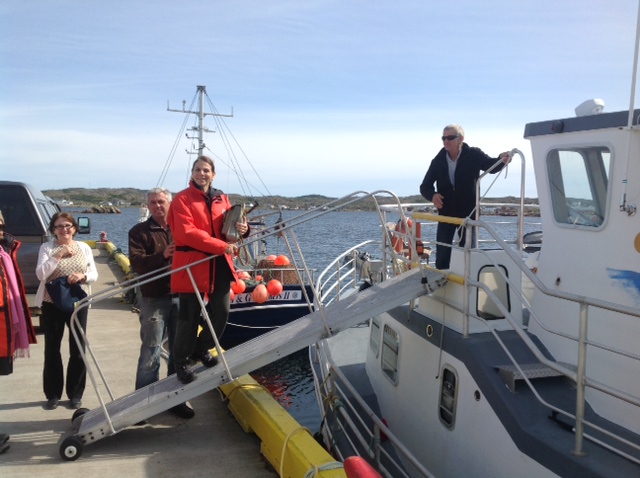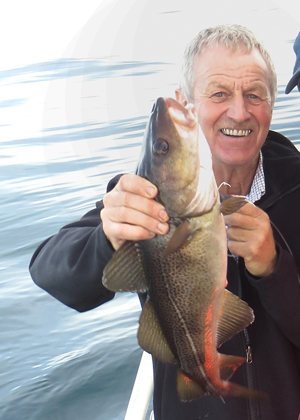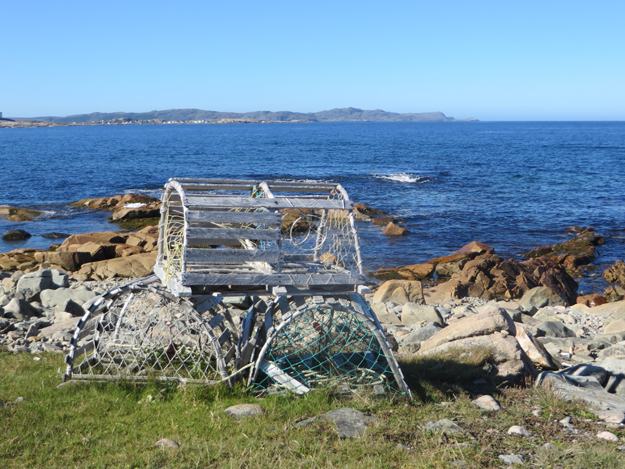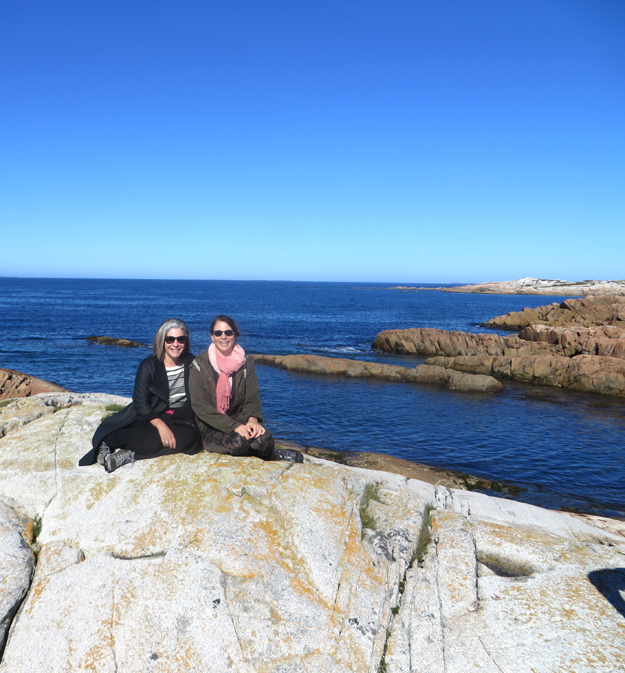
We hopped onto the Trans Canada Highway (TCH) at Mile Zero. The world’s longest national highway, the TCH stretches across Canada from St. John’s Newfoundland on the East Coast, to Victoria B.C. on the West Coast, a whopping 7,821 km (4,860 miles) long. Mrs. Grizzly and I napped in the back seat while Mr. Grizzly expertly navigated my husband through a dense early morning fog. We were startled awake by this sound
followed quickly by this
as Mr Grizzly ripped into the bag of All-Dressed Potato Chips at 7:45 am. It was going to be a fun ride.
We arrived in Farewell Newfoundland about 11:00 am and patiently waited to take the ferry across to Fogo Island. As we were buying our tickets, they asked if anyone in our group qualified for the senior’s discount – age 60 here. My husband, who reached this magic age the day before, was thrilled to receive his first senior benefit!
I had done a little reading before coming to Fogo Island, but nothing really prepared me for my experience here. Although I had seen a few photos online, driving up the winding gravel lane, rounding the corner and finally seeing The Fogo Island Inn come into view was surreal.
Fogo Island Inn is the brainchild of Zita Cobb. Ms. Cobb, one of seven children, was born and raised on Fogo in a home with no electricity or running water. Those amenities didn’t arrive on the island until 1972. She left Fogo at age 16 to study business at Carleton University in Ottawa. Within 20 years, she made a name and quite a fortune for herself in the high-tech industry (fibre optics at JDS Uniphase). In 2001 she exercised her stock options and cashed out with close to $70 million dollars. She took off to sail around the world, but the pull of Fogo Island was very strong and brought her back there in 2005.
Cod fishing has been critical to the economy of Newfoundland for centuries. However, due to greed and overfishing, stocks of cod became depleted and in 1993 the Federal Government declared a moratorium on cod fishing. This caused a collapse of the fishing industry in the province and Fogo Island was especially hit hard.
Zita returned with the goal of giving back to her declining community. Initially she set up scholarships for the youth of Fogo Island, but during a town hall meeting one resident approached her and said that while she appreciated everything Zita was trying to do, scholarships would just encourage people leave rather than building a better place for them to stay. As Oprah would say, Zita had an “aha” moment.
Rethinking her strategy, together with her brother Anthony, Zita established the Shorefast Foundation with the mandate of revitalizing the island by preserving local culture and making it a geotourism destination. Zita calls this “entrepreneurial philanthropy”.
The foundation’s main initiative was the building of Fogo Island Inn, which opened for business in 2013. Inn employees receive 15% of gross revenues in addition to their salary. Any profits from the Inn are reinvested by the Foundation, via micro-finance loans to local small businesses.
Fogo Island Inn is truly a love letter to the island. The Foundation hired award winning Norway architect Todd Saunders to design and oversee the building of the inn. Originally from Gander Newfoundland, Todd had an innate understanding of Zita’s vision and worked tirelessly to bring it to fruition.
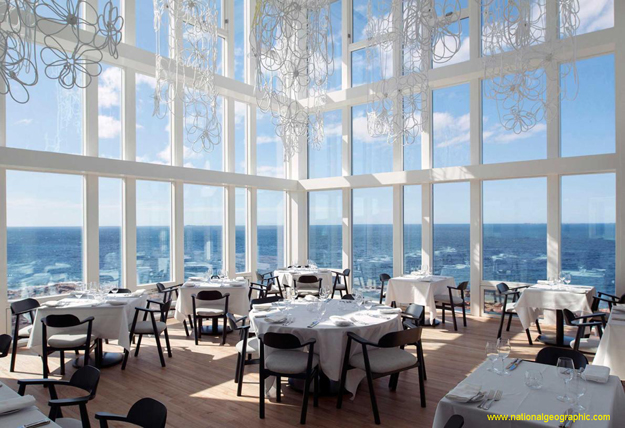
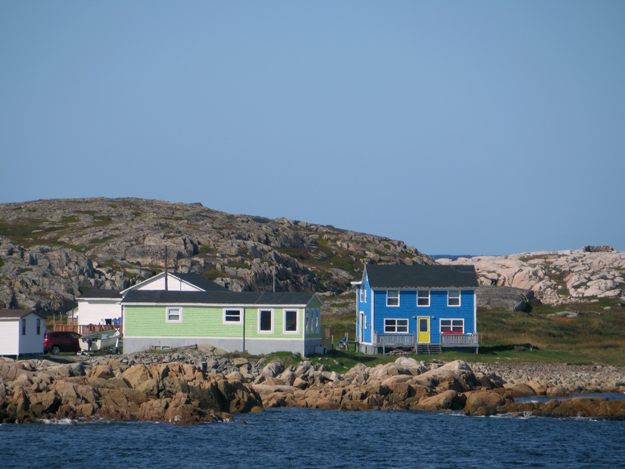
We visited Phil and Maureen Foley’s shed. Reminiscent of my first student apartment, the shed was brimming with overstuffed couches and chairs that had seen better days. The walls were plastered with posters. We started chatting with Phil and discovered that he is the dad of the hotel clerk we met that morning in St. John’s! Small world. We were introduced to Phil’s brother and sister-in-law (Gerry and Darlene) as well as several other locals. After about 15 minutes of small talk Phil asked us if we had a song to share. WHAT??? Apparently shed culture involves singsongs as well. Gerry whipped out his guitar and started in on a beautiful haunting Irish melody. Phil, and then his wife Maureen also entertained us with some traditional Celtic tunes.
My initial instinct was to whip out my camera and record the performances. But an inner voice told me to sit still, be present in the moment and savour it. Somehow we have started to believe that every moment of our lives needs to be documented, and in doing so, we miss the being part of the moment.
I will admit to coming home and Googling Maureen, to see if anyone else had recorded her, so I could share it with you guys, and sure enough, there she was. Click here to check her out.
Chef Murray MacDonald is at the helm in the Fogo Island kitchen. A fellow native Newfoundlander, he left the island at age 18 to attend culinary school in P.E.I. He then honed his skills, travelling and cooking in Bermuda, the Cayman Islands, New Zealand, China, and Mexico. Just like Zita, he travelled around the world, only to find his way back home. And, just like Zita, he believes in honouring and preserving the traditions of the past.
At heart Chef Murray is a locavore with a strong survivalist spirit. “We are doing what our ancestors did a hundred years ago, using our ingenuity to forage, gather and cook. Back then they worked with what they had to survive…Our menu is focused on wild things from the North Atlantic and local seasonal produce.” He talks about the importance of having one foot in the past while looking to the future, in order to stay relevant. His kitchen motto is “Find new ways with old things.”
Foraging for ingredients is one of his favourite pastimes. While we were there we had a chance to taste pasta created with sea urchin, found on the rocks by the shore, just beyond the kitchen door. And, as a side note, can I just say how happy it made me to discover that his guilty pleasure food is bologna!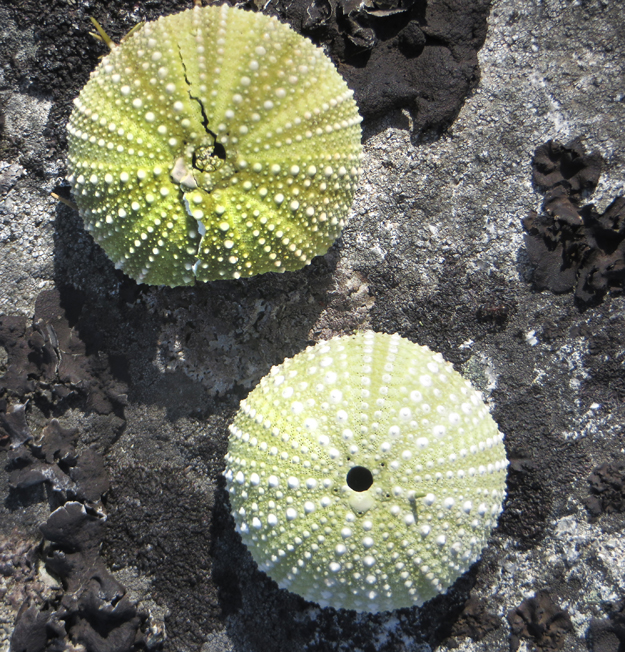

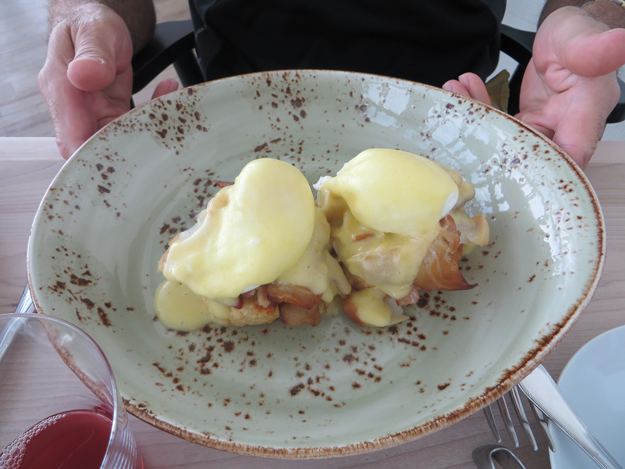

The unflappable housekeeping supervisor, Rosemarie, outfitted us in bright orange rain slickers, mittens and hats. As we were leaving, she slipped a bottle of Non-Drowsy Gravol into my pocket. Nine of us set out on the M/V Ketanja with Captain Emberley for a three hour tour. We’re all smiles as we board the boat. 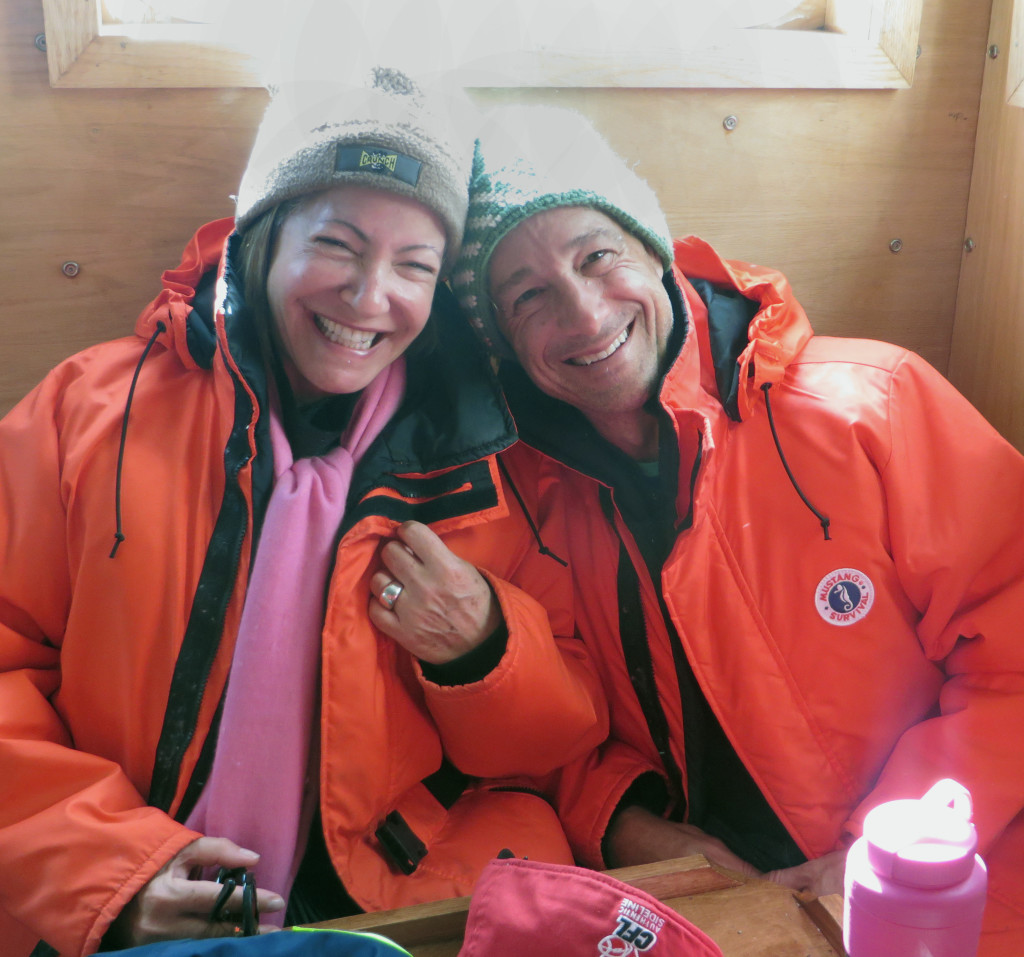
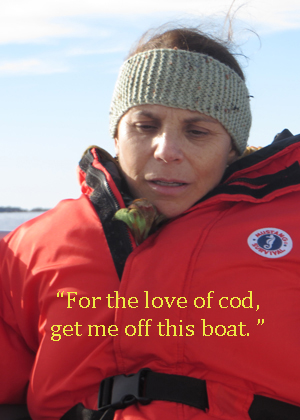
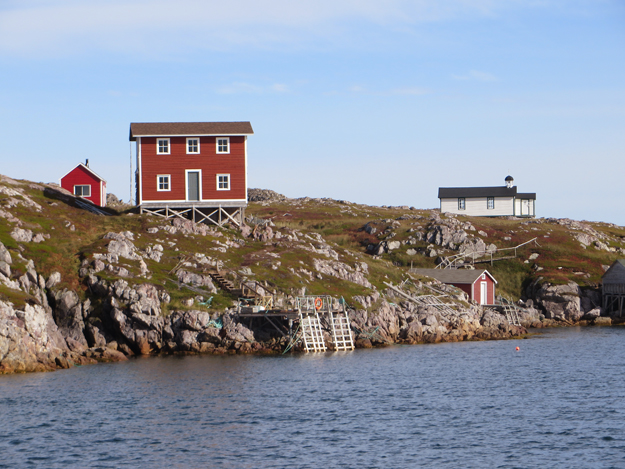
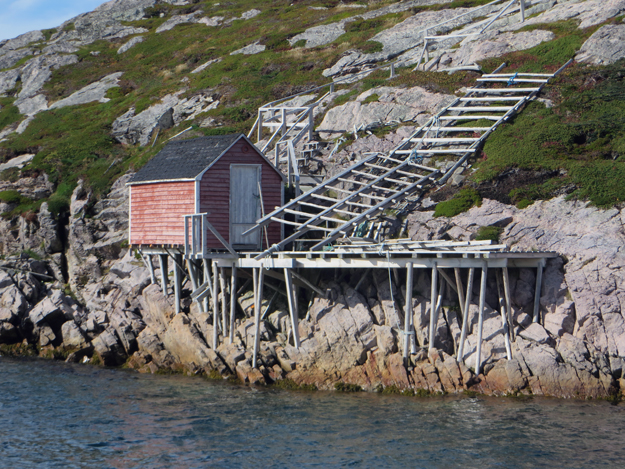
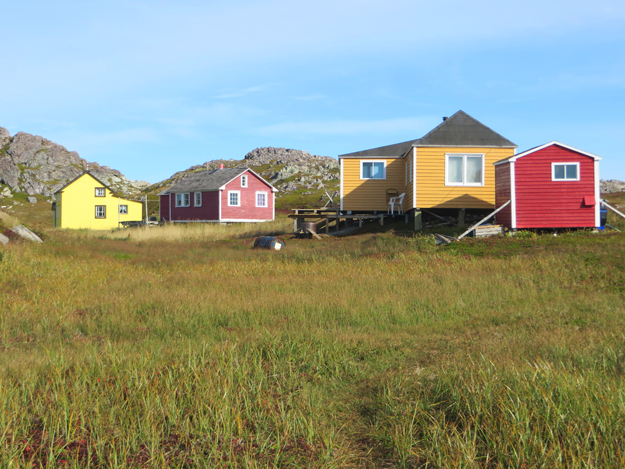
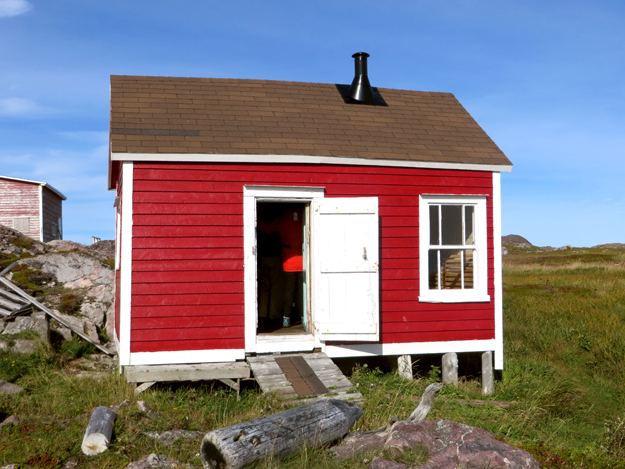
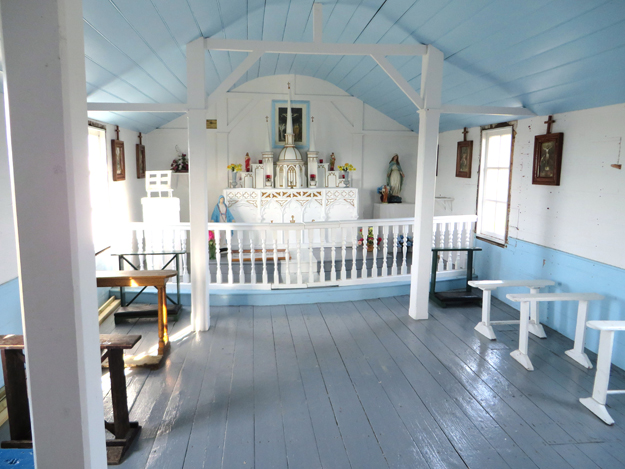
On our last night at the Inn, we began chatting with our young waitress. When we asked her what changes she has noticed since the opening of the Inn, her answer surprised us. She said that of course the Island has begun to prosper financially, but what she noticed even more was a change within her.
No different than most kids living in a small town, she said she wanted nothing more than to leave the Island when she became an adult. She headed off to Halifax when she turned 18 but became quite homesick. She moved a little closer, to St. John’s and then when the Inn opened in 2013 she came home. All of the sudden she began to see Fogo Island through the eyes of all the guests coming to visit. They gushed about the raw beauty and unspoiled terrain. She had taken it for granted all her life, and seeing it through a different lens made her really appreciate what she had all along. I guess there’s no place like home after all!

